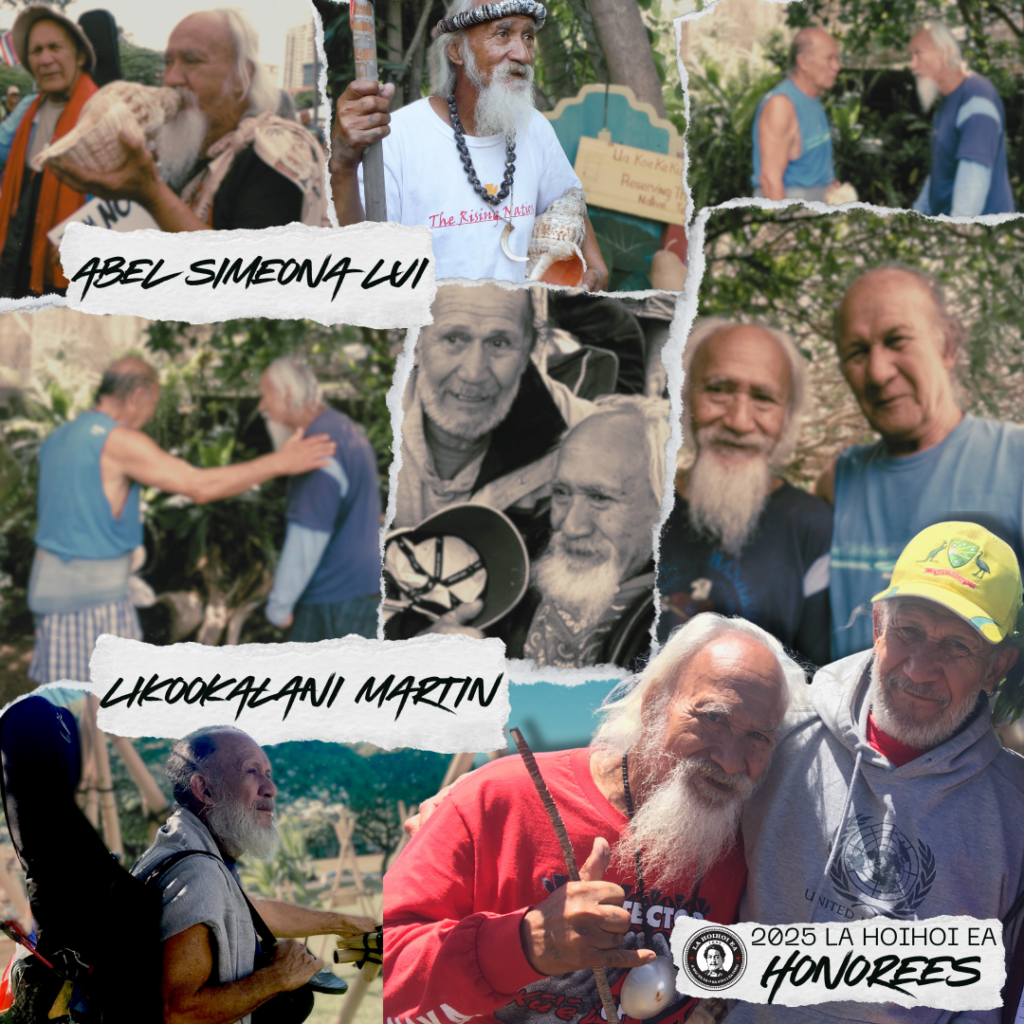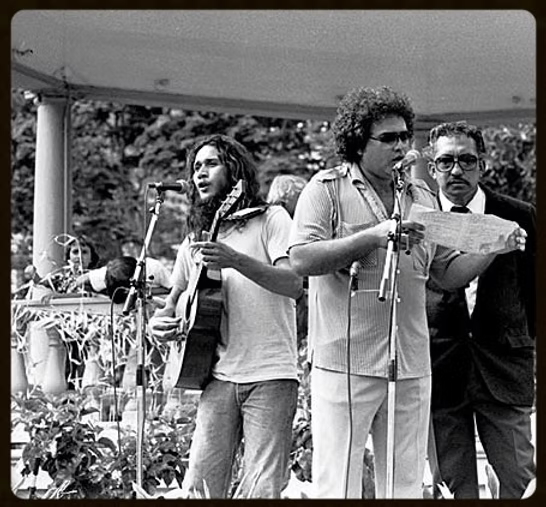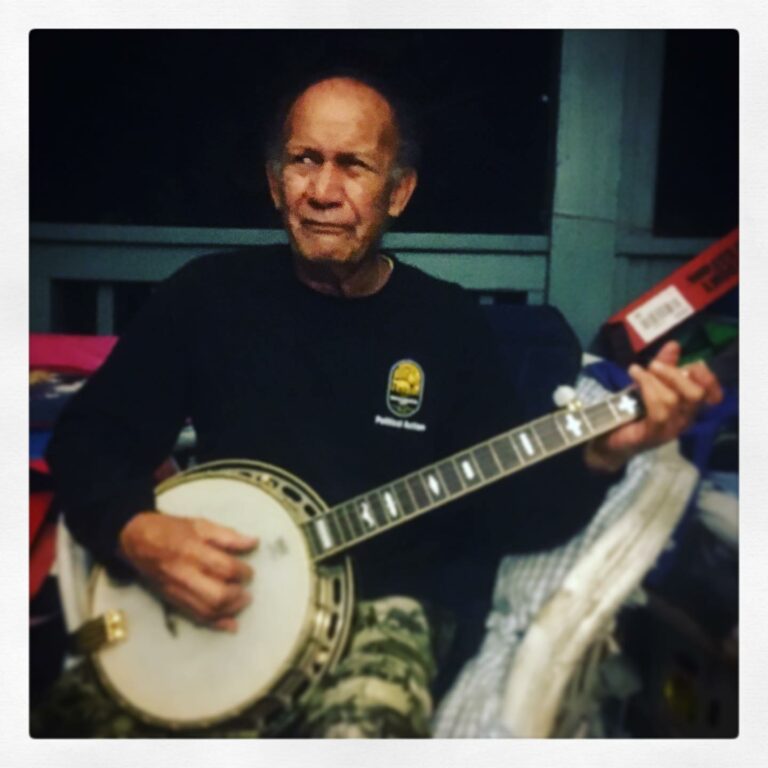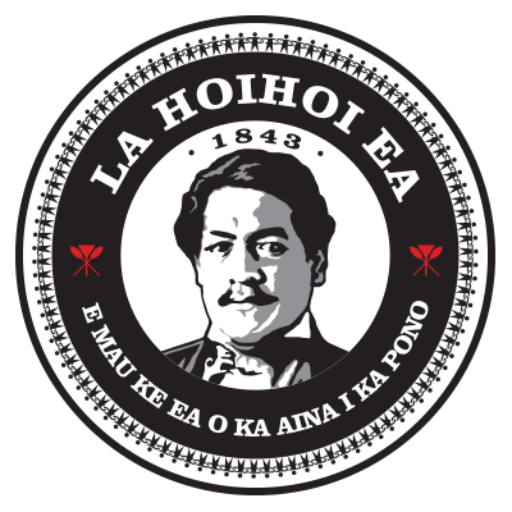
Honoring the Life and Legacy of Likookalani Martin and the Late Abel Simeona Lui


Liko Martin: A Beautiful Life of Aloha ʻĀina and Mele
Early Life & Family
Liko Martin was born in Honolulu in 1945, the day after the United Nations opened in Geneva, Switzerland. Some say that “the United Nations was a great idea…and then Liko was the backup plan.”
His father was an Army musician, and his mother was an administrator and professional singer who had recorded with a young Gabby Pahinui, having six siblings who included well-known judges, community leaders and a former Miss Hawaiʻi. Her family was deeply rooted in Hawaiʻi’s history, from her father, City Councilman Ernest Heen, to her great-grandmother, who was imprisoned in 1895 for reportedly smuggling weapons to Hawaiian patriots in a cartload of bananas.
Musical Beginnings
Liko learned to play kī hōʻalu (slack key) guitar from his grandfather at their Diamond Head home when he was nine years old. The first day that he was taught the guitar, he wrote three songs. Since then, Liko has written hundreds of songs, including classics such as “All Hawaiʻi Stands Together/Hawaiʻi Loa Kūlike Kākou,” “Nānākuli Blues” (aka “Waimanalo Blues,” which he created from a poem his friend Thor Wold wrote about manaʻo Liko shared with him on a ride to Kaʻena Point), “We Are the Children,” “Sunlight, Moonlight,” and more.
Military Service & Scientific Studies
Liko was a message router in the Air Force, where, after speaking his mind regarding the Viet Nam War, he received an early honorable discharge and enrolled at the University of Hawaiʻi to study geology, oceanography and other physical sciences. This has aided him greatly in articulating aloha ʻāina concepts in modern terms.
After this, he went to work on the island of Kwajalein, where he learned from the residents of Ebeye about the true effects of nuclear contamination. In 1967, he wrote the first of his many “love letters” to Congress, about the need to stop nuclear bombing in the Pacific. This began his activism, which has now spanned nearly six decades.
Kalama Valley & Hōkūleʻa
In 1970, he joined efforts to protect Kalama Valley on the island of Oʻahu from development, and was arrested in 1971 on the roof of pig farmer George Santo’s house.
After this, he went to live in South Kona, where he became the kakoʻo (assistant) of a powerful kupuna, Auntie Clara Manise of Hōnaunau. Auntie Clara had been told by her elders to always keep a special gold cloth by her, because “one day, a canoe is going to come.” Sure enough, one day the Hokuleʻa appeared offshore on its initial interisland test voyage, floundering with damages, without a safe place or traditional knowledge to moor. Auntie Clara waved the cloth, and guided the canoe in.
She, Liko and a small crew that would become Hokuleʻa’s elders went aboard, and ended up taking over the waʻa for the remainder of the voyage, which culminated in Liko captaining Hokuleʻa for a very memorable return, surfing the 61-foot canoe into his home sands of Waikīkī.
Teachers & Influences
Liko also learned from other great kupuna of the time, including ‘Iolani Luahine (whose kahu, Sam Hart, gave him the name “Liko o ka Lani”), Emma Defries, Harry Kunihi Mitchell, Vince Napolis and Pīlahi Pākī, who translated “All Hawaiʻi Stands together” into “Hawaiʻi Loa Kūlike Kākou.”
Musical Impact & the Hawaiian Renaissance
Meanwhile, Liko was a major, largely unseen musical force behind the Hawaiian Renaissance. In addition to his own music, which included opening for Santana with a 7-piece band at the 1973 Crater Festival to a skydiving airshow, and intensive courtship by several major record labels, Liko was involved with creative coaching, A&R, and management, and worked with bands such as Country Comfort, Olomana and Kalapana, amongst others.
He founded his own company, Mountain Apple Productions, which went on to become the quintessential sound of the 1970’s under legendary producer John DeMello. Liko’s manaʻo behind the name came from a period of colonial hardship in Hanalei Valley on Kauaʻi in the 1800’s, where a miraculous reblooming of the ‘ōhiʻa ‘ai kept the people from starvation. The purpose of Liko’s music is to feed the people, just as the mountain apple did back then.
Activism & Nationhood
Liko and his close friend Kawaipuna Prejean, with funding that largely came from secret movement supporter Don Ho and a few other hidden allies, were behind many of the defining moments of the 1970’s, from the first landing on Kahoʻolawe to the first January 17th event at ‘Iolani Palace, entitled “All Hawaiʻi Stands Together,” for which Liko took out the first permit in 1977.
That event was part of a multi-island tour that Liko organized with his friend George Helm, who was lost at sea before the tour was complete. Liko and Kawaipuna also ran an independence-focused organization called the Hawaiian Coalition for Native Claims, which had an office on King Street from which much of the initial international work for the restoration of Hawaiʻi’s independence was done.
Exile, Solidarity & Cultural Work
Liko’s intense activism eventually resulted in threats to his life, and he was exiled to California for several years. Liko also traveled to the Continent to connect with Indigenous peoples there, forming deep bonds with communities working to protect their lands, waters and cultures.
He has also traveled throughout Hawaiʻi, working as a traditional kukuʻi, or storyteller/musician, spreading oral history, music and knowledge while working directly with communities on taro farming, fishing and other cultural practices about which he is deeply knowledgeable. He has helped to unify communities and bring movements together through the power of music.
Legacy
Throughout all of this work, Liko’s deepest love has been for his children, all of whom he cherishes dearly. Now a great-grandfather, Liko takes tremendous pride in his descendants, who include skilled artisans, native plant specialists, musicians, surfers, healers, fishermen, and so many other contributors to our great Lāhui.
Liko will be 80 this year. He sums up his message to the next generation in the following manaʻo: “Let us assume our responsibilities, and take control of our destiny and our country, Hawaiʻi. Let us fulfill the prophecies of our kūpuna.”


Abel Simeona Lui: An Aloha ʻĀina Warrior
Born in Honolulu, Territory of Hawaiʻi
Abel Simeona Lui was born in Honolulu, Island of Oʻahu, “Territory of Hawaiʻi,” on May 1, 1943, to Waialoha Simeona and Michael “Mikiele” Lui. He was the 4th of 9 children. He didn’t find out until later in life he was promised to an Aunty, but born with club feet and his mom kept him. Abel said he spent several years as a test baby in Shriners Hospital where his legs were broke and reset. Many splints and braces being adjusted over time and he could walk quite well by December 1945. He spent a lot of time in his young childhood with his Tūtū Man. Abel was recognized in childhood for his abilities to transform energy through the power of Aloha. He was nephew to notable Kahuna Morrnah Simeona who taught Ho‘oponopono, and descendant of known diplomats and healers of the Hawaiian Kingdom.
His Mother Taught Him the Art of Aloha
His mother taught him the art of aloha as a spiritual practice from an early age. He could see and hear her when she was calling him home from far away, which his cousins and friends thought he was just imagining. When he was treated badly for questioning his elementary school’s erasure of Hawaiian history, she taught him to go deep into his love for those who mistreated him, while using prayer to remain steadfast in his knowledge of what was right. One incident he shared frequently was questioning his teacher about teaching the story of Washington chopping down the cherry tree. He asked her to “please tell us about our Queen and Kings,” and he was told “insubordination!” (which he didn’t know the meaning of at the time) and sent to the janitor, Mr. Kalili, to clean under the hala tree in the schoolyard. When he got home he told his dad what had happened, and his dad sent him out in the yard to a big stone and said, “Talk to the pōhaku. Do you love your teacher?” “Yes, I love my teacher,” replied Abel. “Do you love God?” “Yes, I love God,” Abel said. His dad then picked up a handful of sand from the yard and let it sprinkle through his fingers and said to Abel, “There are more stars in the sky than all the grains of sand, and that’s how much God loves you. Looking for the pot of gold at the end of the rainbow — you are the pot of gold, you are the rainbow.”
Selected by Mrs. Domingo to Serve as Her Assistant
As a young boy in Kaʻaʻawa, Oʻahu, he was selected by the respected community midwife, Mrs. Domingo, to serve as her assistant during births. He recalled that she would wake him up with the sound of filling buckets outside his house, while softly calling “Boy! Boy!” This was his signal to get up and carry the buckets to the home of the laboring woman, where he assisted Mrs. Domingo in her work. Although these practices were eventually driven from their community by forced medicalization, Abel kept a wealth of birthing knowledge throughout his life. Abel assisted in the birth of his brother Bernard, and later all three of the home births of his children on Moku o Keawe.
Known for His Bravery and Uncompromising Steadfastness
As a young adult, Abel (known as Bobo) became a fierce fighter known for his bravery and uncompromising steadfastness. He spent time in rough neighborhoods and in prison, where he learned to cook for hundreds of people at a time — a skill that would serve his future activism and community work. “Go home, plant food, feed the people, claim back your birthright,” Abel frequently said.
A Voice Told Him to Go Home to Kawa
Abel was spending time on Kauaʻi with his brother around 1987, when he heard a voice telling him to go home to Kawa, Kaʻū, Hawaiʻi Island, where his family has deep roots. His ancestral ʻāina, Kawa (Royal Patents 993 and 1530 purchased by Timoteo Keawe during the Great Māhele in the 1850s), became his home, where he worked as a spiritual practitioner, visionary, and Aloha ʻĀina warrior for over 25 years — restoring the land, freshwater springs and pond, and ancestral sites, and care-keeping as konohiki of the land and heiau, as appointed by his ʻohana, kūpuna council, and God. He was affectionately known as “Uncle Abel” to all.
Violently Removed from Kawa
Tragically, the County of Hawaiʻi, with state grant assistance of “fortress conservation” forces, violently removed him and his family from Kawa — which nearly broke him and his family with all the court cases, and had a devastating effect on his health. Still, he kept close ties to the land and continued his spiritual work there until the end of his life. One of the last things he asked before he crossed the Rainbow Bridge was, “Who’s going to watch over the pond?” Then he asked, “Where’s mom?”
A Powerful Force in Aloha ʻĀina Battles
Meanwhile, Abel was a familiar powerful force in Aloha ʻĀina battles on Hawaiʻi Island. The protection of Mauna Kea was especially essential to his work, and he was an important part of efforts from the early 2000s onward and before (stopped the rocket launching plans), often memorably cleansing the court cases, the hearings, the County Council meetings, trying to halt the spray of Roundup with the sound of his famously powerful pū (conch shell), and resonant, powerful chanting of “Aloha!” Abel’s work for Mauna Kea’s protection culminated in his arrest in 2019 while holding the line with 37 other Kūpuna Aloha ʻĀina. After his release, he went right back to the site after an ambulance ride to Hilo ER and held that line all over again.
Sentenced to a Week at the Hilo Jail for His Seventieth Birthday
A few years before that, he was arrested after trying to stop a County worker from spraying Roundup at Honuʻapo, Kaʻū, into and around the ponds and caves home to owls. Dying owls came to him at his roadside campsite at Kawa, as he was there for 2 years in protest of the purchase of the land for a park by the County. He was sentenced to a week at the Hilo jail for his seventieth birthday. The driveway is now gated since 2012 with “Government Property, No Trespassing” signs. He was also briefly arrested in Hilo for planting kalo around the King Kamehameha statue at Wailoa Pond. He was invited to ride on a float in the Merrie Monarch parade the next day. He had a great sense of humor. Also a lomi lomi master who frequently shared his love and healing hands to all. He was passionate in making signs and holding banners high, while blowing the pū.
Departed for the Realms of ʻAumākua
Abel departed for the realms of ʻaumākua on March 5, 2024, at 80 years old, leaving a legacy of Aloha ʻĀina to inspire future generations. We will never forget his fierce Aloha, compassion, kindness, and understanding for all the people, and dedication to the land and Lāhui. “I love you, I love you, I love youuuuuu, I loooooove you, la la la, lalala, I love youuuu, I love you!” was one of his favorite ʻolēs. Forever in our hearts and souls. Mahalo, Abel, for all you did and fought for. We will continue the battle for you to restore the Kingdom. “It’s not over till the fat lady sings…”
